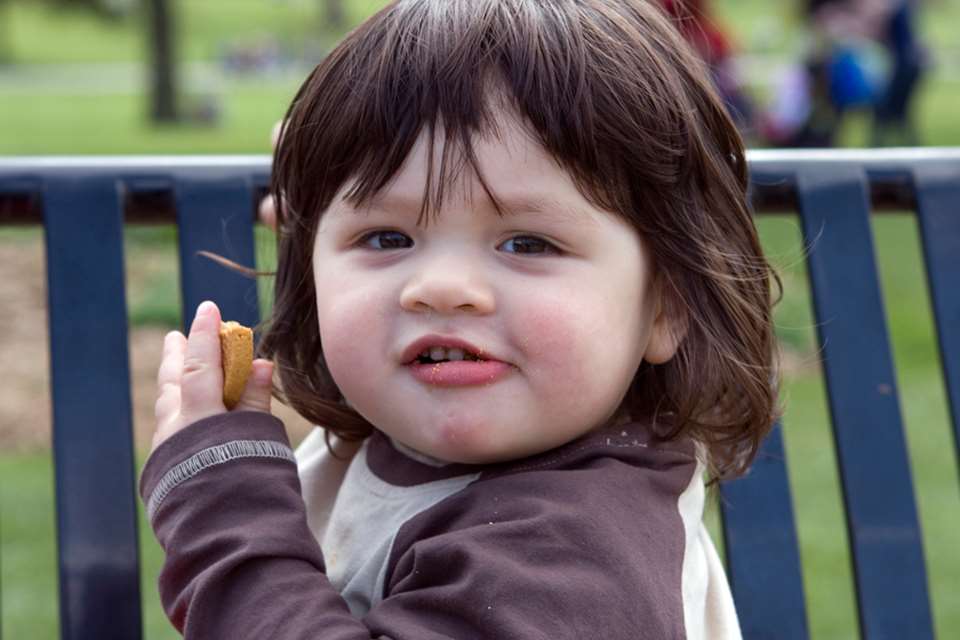EYFS Best Practice - All about…: Calm
Linda Pound
Monday, April 4, 2016
Children need to be stimulated, but over-stimulation can lead to problems. A calm child is better able to focus, reflect and self-regulate, explains Linda Pound

Turn on any children’s television programme or live entertainment and you are in danger of being bombarded by cacophonous sound; flashing lights, raucous colour and wild movement. We denigrate ‘hot-housing’, yet it seems that at every turn, we over-stimulate young children – filling their world with noise and bustle, shouting and action.
Stimulating babies and children is widely seen as vital to raising standards, accelerating development and promoting learning. Descriptions of good or excellent teaching frequently emphasise pace and, all too often, this is taken to mean that children should be hurried through the day – ten minutes for this, five minutes for that. No time for the proverbial standing and staring, pondering or wondering – above all, reflecting.
It is, of course, true that the brain needs excitement. Excitement makes things memorable – finding worms in the soil, eating potatoes you have grown. The vestibular movements so characteristic of young children – such as bouncing, hanging upside down, rocking, somersaulting and spinning – excite the brain and act as what Sally Goddard-Blythe describes as ‘food for the brain’. Toddlers love to clown in order to capture adult attention. In doing so they create excitement and vestibular movement that stimulates learning.
However, where adults fail to tune in to children’s choices, there is a danger of over-stimulation. This creates stress, which far from supporting learning and development, acts as a barrier. Every child has a different level of tolerance for stimulation and excitement. Some cope well with noise and bustle, while others require a calmer environment.
Over-stimulated babies and children are often described as cranky. In an article on parenting, Barbara Hotelling (2004) describes the characteristics of babies who are seeking to ‘disengage’ or reduce levels of stimulation. She includes turning the head away, becoming fussy, squirming, yawning, frowning, and wrinkling the forehead.
In very young children, over-stimulation often leads to tantrums and negativity. Four- and five-year-olds may exhibit behaviour problems – perhaps refusing to do things they would normally do happily. Stuart Shanker (2013) lists a number of characteristics of children feeling unable to disengage and self-regulate, including being unable to pay attention; frequent arguing and angry outbursts; impulsivity; and difficulty in coping with frustration.
Other factors besides over-stimulation or over-scheduling contribute to unhelpful energy levels. These include poor attachment; poor sleep or diet; too little exercise and play; too much screen time; lack of predictable routines and behavioural boundaries; shouting, shaming, blaming and, in extreme cases, abuse. In all children, Shanker suggests, energy levels fluctuate from being asleep to being overwhelmed or flooded.
Learning to self-regulate, key to learning throughout life, requires that children are given space, time and opportunity to manage their levels of activity, as well as periods of rest and calm. Optimum energy levels for learning are described as calm, focused and alert, and it is in this state that children are most able to manage their emotions, ignore distractions and recognise the needs of themselves and others.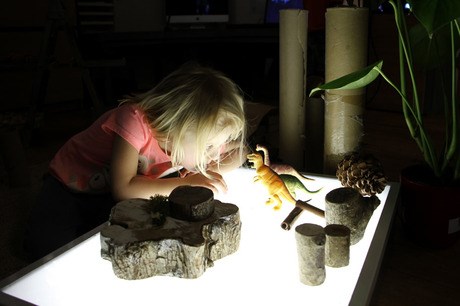
THE IMPORTANCE TO WELL-BEING AND EARLY LEARNING
Daniel Goleman, author of Emotional Intelligence, echoes the idea that happy, calm children learn best. A calm child is better able to focus and maintain executive control – making decisions and choices, respond appropriately to interactions from others and remember things that have been interesting or exciting.
Children need time and space to use their imagination in self-chosen and unhurried ways in order to reflect and develop their potential for self-regulation. Margaret and Rachel McMillan emphasised time and space in their work with young children.
Vivian Gussin Paley comments that we have stolen time from children’s play to increase the amount of formal subject matter. David Putnam echoes this in describing adults as children’s dream-stealers – limiting their imagination, which is not frivolous but essential for understanding the abstract nature of mathematics, and for the possibility thinking that underpins creativity.
In his famous book East of Eden, John Steinbeck writes that the greatest terror children can have is not being loved. Terror represents the opposite of the calmness vital to self-regulation. Adults who are able to establish strong attachments with children are better able to support children by tuning in to how they are feeling.
Interpreting babies’ crying or movements enables adults to respond appropriately. Touch, voice, facial expression, gentle rocking or playful bouncing can all help to regulate the baby’s actions, and support the development of self-regulation.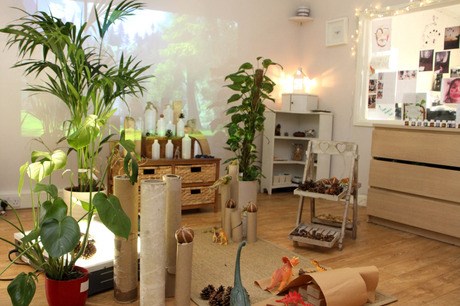
CREATING A WORLD OF CALM
Relationships
There are a number of things practitioners can do to help create a world of calm. In working with young children, relationships will always be key. Positive relationships and meaningful interactions between adults and children are vital.
Adults also need to ensure that they treat everyone – staff, parents, children – with respect and warmth. Early childhood settings are no place for personality clashes of any sort. Is the key person system really working so that children and parents feel secure in the relationship? Does the key person really tune in to children’s needs and interests?
A vital aspect of supportive relationships is to ensure that no child feels like an outsider. Feeling included may mean the presence of books, resources, images and artefacts that remind children of things that are familiar from home and which reflect the rich diversity of this country.
Feeling included will definitely involve engaging parents and family. If they don’t feel comfortable, it will be hard for children to do so. It may also be necessary to find support for parents who appear not to have a strong attachment with their own child.
Space and time
The EYFS requires practitioners to create an enabling environment. In addition to relationships, this involves considerations of space and time. In terms of time, children need clear but flexible routines which are predictable so that children know what will happen and when.
They also need unhurried, uncluttered periods of time in which to make considered choices and decisions. We need to recognise that fragmented timetabling undermines children’s ability to concentrate and persevere, and works against feeling calm.
Gentle on the senses
Guidance to Steiner-Waldorf practitioners (2014) reminds them that the space available to children should be ‘beautiful and gentle on the eye, ear and all the senses’. It goes on to suggest that hard corners should be softened and high ceilings lowered through the use of fabrics.
The room should be decorated ‘in soft tones of pink to create a gentle, secure atmosphere’. You may not want to paint your room pink, but colours undoubtedly influence mood very strongly. A quick Google search will reveal any number of sites highlighting the impact of colours on emotions. It’s worth thinking about this in trying to offer a calm and peaceful environment.
All classrooms and settings should include a wide variety of spaces for work and play – where children can be alone or interact in groups of different sizes, indoors and out. All spaces should be clean, tidy, clutter-free – with calm colours and a predominance of natural materials.
A creative mess may work for a lonely artist in her garret, but in the shared space that is a classroom or early childhood setting, children need to know where they can find things and adults need to avoid spending time looking for things or telling children where to find what they need.
Wooden furniture and natural resources such as pebbles, cones and shells, indoor plants and views that include trees and flowers are all believed to create a sense of calm. Furniture and the way it is laid out sends a message, as Maria Montessori well understood. Think about where you feel most calm and consider how to replicate that for the children.
Research undertaken in Salford suggests that learning is improved where visual displays are connected to the topic under consideration. Busy display – where every available inch of window, wall and ceiling space is covered in multi-coloured posters, paintings and pictures – can be counter-productive.
It would seem that a more minimal and more aesthetically pleasing effect has a better impact on children’s learning.
Noise can create clutter in a learning space. Background noise should be kept to a minimum and strategies employed to prevent noises such as heavy shoes and scraping chairs. The use of soft furnishings – rugs, cushions and drapes – will help to muffle sound and make for a more effective environment for communication.
Checklist
- Helping children to be calm and reflective will support learning and well-being:
- Are you a model of calm – moderating your voice, responding thoughtfully to situations that arise?
- Have you evaluated noise and visual clutter and taken action to minimise them?
- Have you decluttered your overall environment?
- Do you ensure that children have regular and sustained contact with elements of the natural world?
- Are children able to take the physical exercise that they need at a time and in a manner that suits them as individuals? Can they engage in vestibular stimulation such as spinning and rolling? Do you have enough space to allow them to engage in physical activity indoors and out? Do you make sure that babies have floor time – rather than spending longer periods in buggies and other similar devices? With older children, do you limit the amount of time spent sitting on the carpet? (15 minutes at any one time is plenty)
- Are children offered a range of opportunities to engage in expressive arts – music, imaginative play, dance, drama, painting, modelling?
- Do you ensure that relationships with children are warm and positive, employing appropriate touch to reassure and comfort children?
- Do you limit the use of screens?
CUT THE CLUTTER
A group of head teachers visiting Finnish early years settings were struck by the absence of clutter, when compared to settings in this country. Cutting clutter will include minimising noise and streamlining visual displays, but arguably the most radical impact will be felt by focusing on cutting general clutter.
Many of us are inveterate hoarders. We know that that cardboard box will be just the right size for something. We have stuff the last teacher left behind and it seems a shame to get rid of it. We have things parents have given us and it seems hurtful not to accept. But there is danger in hoarding – above all it works against creating a sense of calm and makes it difficult to keep a setting clean.
Start with those ‘glory corners’. Do you have a pile of miscellaneous papers, books waiting to be sorted out? Just do it. Professional declutterers suggest the reason we fill corners is that we don’t like corners. Or it could be that stuff piled in corners doesn’t have so far to fall! Place a plant, flowers or a beautiful display in that corner.
Create a place for everything and ensure that it stays there. Focus on each area of the room in turn and ensure that there is somewhere to place paintings and models close to the area in which they will have been created so that there is no need for clutter to accumulate elsewhere. Baskets and labelled storage trays will help to ensure things can be found and put away.
Don’t have anything out (either in a corner, on the floor, on a chair or on top of a display) which is not intended for use now. That apron you intend to repair, that odd box of Christmas decorations, puzzles with missing bits must all go – either into their proper accessible home, or into controlled storage out of sight, to a charity shop – or the dustbin. Zero tolerance for rubbish is required. Worse still, ancient and irrelevant displays and artefacts are teaching children not to be curious.
Consider arranging for named members of the team to take responsibility for areas of provision. Areas such as the creative workshop take constant maintenance and restocking. Home corner provision may mean enlisting parents or other adults to make dolls’ clothes or bedding from time to time. If there are very popular (or unpopular) areas, staff may need to review to make sure that no-one feels lumbered. If the areas are properly labelled and organised, children will be able to play their part in ensuring that all areas are orderly and tidy. Don’t forget to allow plenty of time for clearing up each day.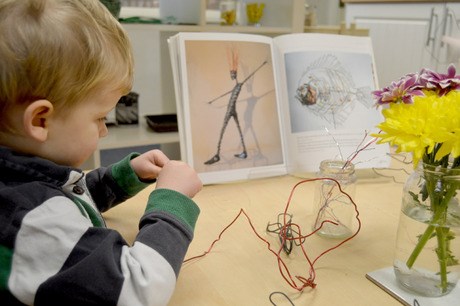
DISCUSSION POINT: SCREEN TIME – CALMING OR NOT?
Many families use television and other screen-based activities as a way of settling children or keeping them occupied. Some would undoubtedly say that it has a calming effect as children often become engrossed and quiet while watching. Many early childhood curricula include a focus on technology. Parents shopping or otherwise engaged may give babies mobile phones or tablets to play with.
However, not everyone agrees that screen time has a calming and empowering effect on young children:
Steiner kindergarten practitioners resist the use of any form of television or electronic device, and in the 21st century, educationalists such as Robin Alexander remind us that talk, not technology, must always be regarded as the foremost element of learning and communication.
Sue Palmer in her book Toxic Childhood argues that screen time is one of the toxic factors in young children’s current environment fostering violence and dependency on the purchase of special (and often expensive) equipment. Maggie Dent (2011) warns of over-exposure to screens, including television, adding ‘please avoid TV as much as possible in the early years’. She argues that, even when they seem not to be paying attention, violent images may be skewing the way in which children see the world.
Some speech therapists have expressed concern at the undermining effect that television may have on the development of language – especially in under-twos. See, for example, www.nurseryworld.co.uk/nursery-world/news/1086053/speech-delay-words, or www.literacytrust.org.uk/assets/0000/0429/TV_early_years_2004.pdf. Communication difficulties can be frustrating for young children and may impact on their sense of calm and well-being.
Neuroscientist Susan Greenfield warns of dangers in the overuse of technology. Her research suggests screen use may impact attention span, empathy and identity.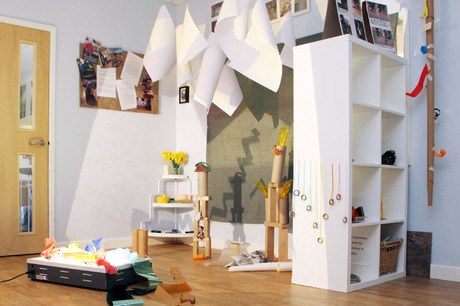
MORE INFORMATION
Dent, M (2003). Saving Our Children from Our Chaotic World. Pennington Publications
Eliot, L (1999). Early Intelligence. Penguin Books
Goddard-Blythe, S (2005). The Well Balanced Child. Hawthorn Press
Jarman, E (2007). Communication Friendly Spaces, www.elizabethjarmantraining.co.uk
Paley, VG (2004). A Child’s Work: The importance of fantasy play. The University of Chicago Press
www.fastcodesign.com/1671627/study-shows-how-classroom-design-affects-student-learning
To find out how Little Barn Owls Nursery and Farm School in West Sussex creates an enabling environment of calm reflection, see: www.nurseryworld.co.uk/nursery-world/feature/1156243/enabling-environments-nw-nursery-of-the-year-inspired
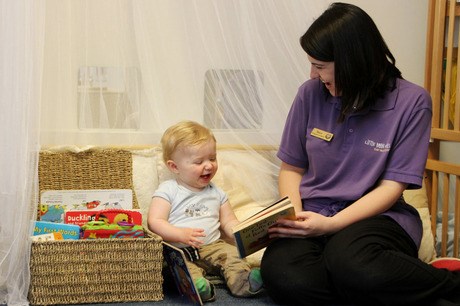
NW CONFERENCE: SELF-REGULATION – THE KEY TO EFFECTIVE LEARNING
Self-regulation is crucial to early learning, lifelong achievement and bridging the gap in children’s academic outcomes. Find out more about the neuroscience and vital role of play-based curricula in promoting children’s ability to regulate their feelings, thoughts and actions at Nursery World’s London conference on 30 June.
Our keynote speaker is Clancy Blair, professor of cognitive psychology at New York University. A leading authority on self-regulation, he will look at the neuroscience behind self-regulation; the implications for early years curricula; and the ‘Tools of the Mind’ curriculum.
The conference will cover the emotional and cognitive aspects of self-regulation and focus on:
How self-regulation links to the Characteristics of Effective Learning and aspects of the EYFS.
The elements of early years provision and play-based curricula that best promote children’s ability to take control of their learning.
Chair for the day is Dr Julian Grenier, head teacher of Sheringham Nursery School and Children’s Centre, and other speakers include early years consultants Nancy Stewart and Helen Moylett. Practical workshops will include maths with Linda Pound; behaviour with Anne O’Connor; outdoors with Redcliffe Nursery School; working with parents with Everton Nursery School; and role-play and music with self-regulation expert Dr Antonia Zachariou from the University of Roehampton.
To book a place, visit: www.selfregulation.co.uk/home
REFERENCES
Hotelling, B (2004). ‘Tools for teaching newborn capabilities: parent teaching is a necessity’, The Journal of Perinatal Education. Vol13 No4 pp43-49
Shanker, S (2013). Calm, alert and happy, www.edu.gov.on.ca/childcare/Shanker.pdf
SWSF (2014). Information about Steiner Waldorf Early Childhood Settings, www.steinerwaldorf.org/steiner-education/early-years
Dent, M (2011). Happy calm children learn best, www.maggiedent.com/printpdf/184





